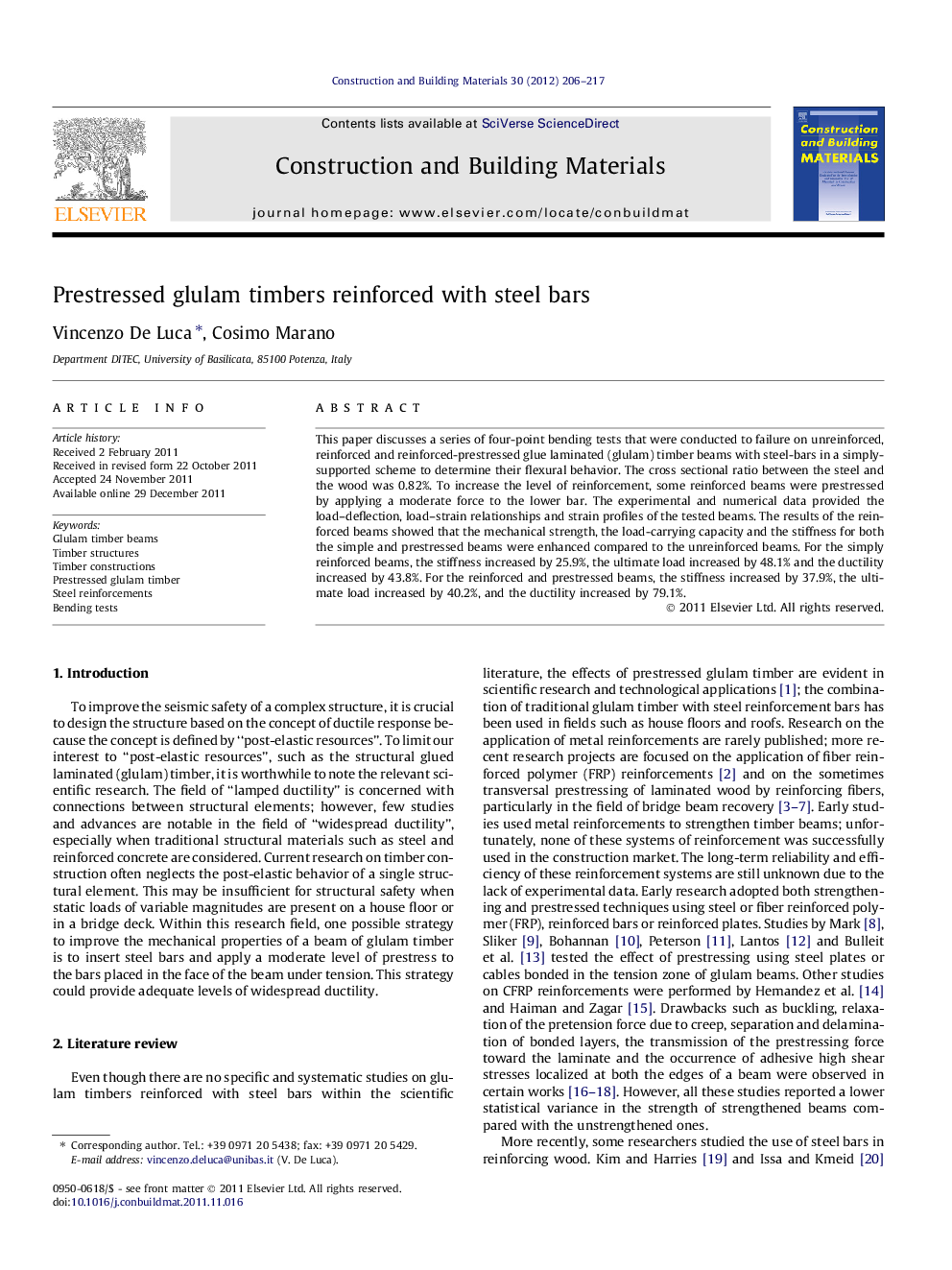| Article ID | Journal | Published Year | Pages | File Type |
|---|---|---|---|---|
| 258514 | Construction and Building Materials | 2012 | 12 Pages |
This paper discusses a series of four-point bending tests that were conducted to failure on unreinforced, reinforced and reinforced-prestressed glue laminated (glulam) timber beams with steel-bars in a simply-supported scheme to determine their flexural behavior. The cross sectional ratio between the steel and the wood was 0.82%. To increase the level of reinforcement, some reinforced beams were prestressed by applying a moderate force to the lower bar. The experimental and numerical data provided the load–deflection, load–strain relationships and strain profiles of the tested beams. The results of the reinforced beams showed that the mechanical strength, the load-carrying capacity and the stiffness for both the simple and prestressed beams were enhanced compared to the unreinforced beams. For the simply reinforced beams, the stiffness increased by 25.9%, the ultimate load increased by 48.1% and the ductility increased by 43.8%. For the reinforced and prestressed beams, the stiffness increased by 37.9%, the ultimate load increased by 40.2%, and the ductility increased by 79.1%.
► Prestressed glulam reinforced with steel bars is still not widely investigated. ► Prestressing of glulam beams can be improved through new and powerful adhesives. ► The experimental results show good improvement in mechanical strength. ► Steel, which is itself ductile, improves the ductility of the composite wood–steel. ► Steel bar moves the failure mode from brittle tension to ductile compressive.
